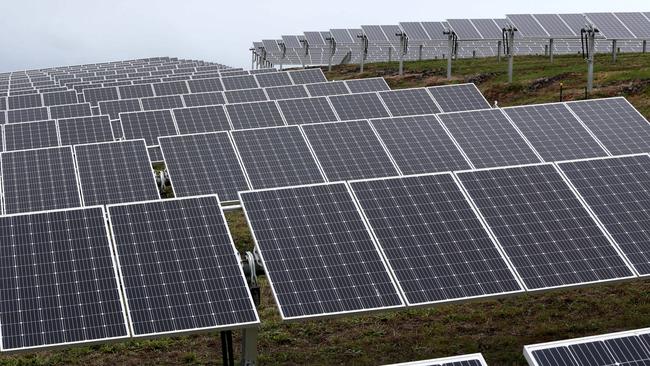Microgrids can power transition to net zero

Microgrids are an answer to these dilemmas, enabling the adoption of renewables across industrial sites, housing estates and regional towns, providing cheaper power while reducing pressure on the main grid.
With the world focusing on cutting carbon emissions, now is the time for business and government to work together for the adoption of microgrids across the nation.
It makes absolute sense for every new shopping centre, business park and housing estate to be powered by microgrids, but existing regulations get in the way.
As well as contributing to sustainability and efficient energy management, these self-contained generation and distribution grids are emerging as an answer to balancing energy flow across electricity networks to maintain reliability.
We are already witnessing a remarkable growth in microgrids, as new road map from the International Microgrid Association, compiled with KPMG, demonstrates. It details successful projects across Australia, including in the remote coastal town of Onslow in Western Australia.
The town was using a mix of non-renewable energy sources, including diesel and natural gas generators, but Onslow also had significant rooftop solar use, which was leading to renewable energy production that exceeded the network’s hosting capacity.
The combination of intermittent renewables generation and a small network was causing grid instability and blackouts. Horizon Power set out to integrate multiple renewable energy sources and batteries in a controlled microgrid. The system operates across 260 customer-owned solar PV installations, a utility-owned solar PV farm, two large community batteries, and 500kWh of customer-owned batteries.
It provides constant visibility of energy generation, storage, customer demand and other variables. The grid is now reliable and it has tripled its renewable energy hosting capacity.
As the road map states, microgrids make the most of cheap renewable energy such as hydropower, solar and wind – eliminating emissions. They also allow for better energy management through advanced data and analytics tools.
A microgrid, a self-contained power system, can vary from only a few buildings to large industrial facilities and entire communities.
A key benefit is the ability to generate local renewable energy where it is consumed instead of transporting it via long transmission lines, giving remote towns more energy reliability and price control. It provides independence from the grid and the capacity to sell excess power back to the grid. It means reliable supply and reduces pressure on the wider power grid.
In my day job as director of the digital grid for Schneider Electric across East Asia and the Pacific, we are receiving constant microgrid inquiries and are in conversation with five distribution networks at the moment. We’ve seen more interest in the in the last six months than the previous four years.
Early adopters are reaping the benefits. A statewide power blackout which resulted in the loss of $2.5m of produce prompted the South Australian Produce Market Limited to build a microgrid to guarantee power supply. It includes 6412 solar panels and 25 Tesla industrial-scale batteries.
Not only can the market keep the fruit and vegetables flowing, it can operate in conjunction with – or separate to – the wider grid. The microgrid reduced the company’s annual greenhouse gas emissions by a third, and is projected to save $4.3m on power bills over the next decade.
The time is right to embrace microgrids, with renewables overtaking fossil fuels, battery storage evolving, demands for a more flexible grid and the desire to protect our power systems from increasingly frequent natural disasters. They are a critical element of the move to net zero and can drive a genuine energy transition.
The challenge is moving microgrids from niche to a norm. Every new shopping centre, business park or housing estate should have a microgrid. Regulations must be revamped to encourage microgrid adoption, and government should fund more developmental trials and consider subsidies.
The benefits are widespread, microgrids also empower the “prosumer” – energy producer and consumer – selling their generated power rather than being a passive customer of on the network.
Microgrids are smart systems for a smart society. They make solar intelligent, so we can control it – helping both the market and the grid. So why wouldn’t we mandate this?
There are encouraging signs, especially in a state like Western Australia, with an abundance of the renewable energy resources and remote towns and mines hungry for power.
In Queensland, government-owned utility Ergon Energy has opened a new $6m “world-class” microgrid development hub designed to accelerate the integration of renewable energy technology into the state’s electricity network. Nationally, the federal government is funding 20 regional microgrid feasibility studies.
Microgrid adoption much be accelerated even more if net zero targets are to become a reality and Australia is to make the most of this once-in-a-lifetime energy transition.
James Colbert is chair of the International Microgrid Association



The major barriers to accelerating Australia’s transition to net zero carbon emissions are inconsistent renewable power generation and an outdated power grid unable to cope with peaks in supply and demand – or enable the vast numbers of households and companies producing renewable power to sell it back to the grid.